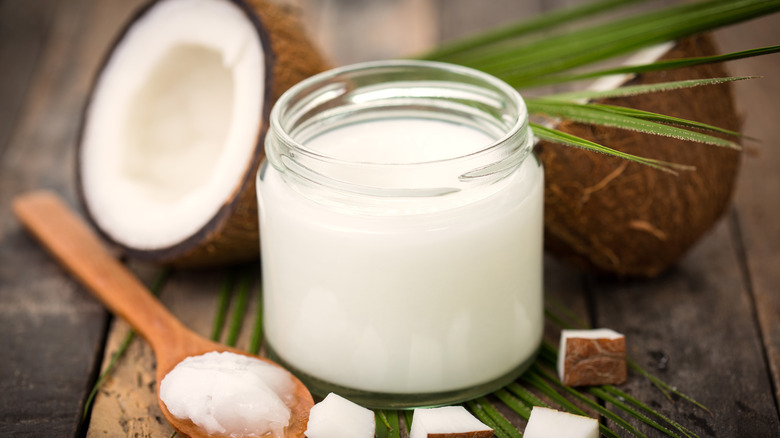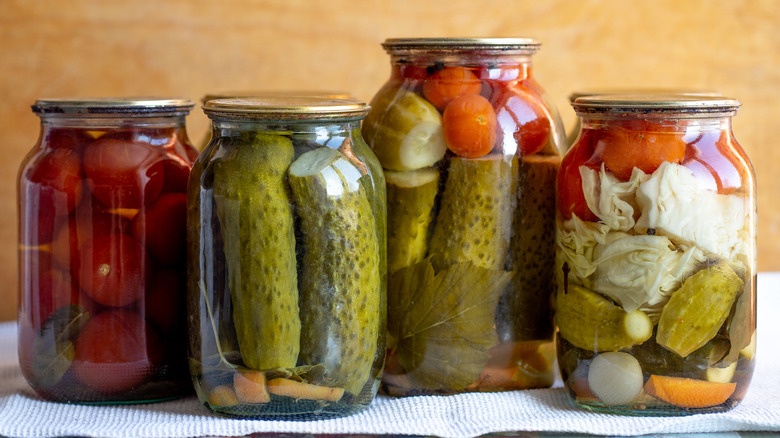The Pantry Staples Marcus Samuelsson Can't Go Without
While the oven might be the beating heart of your kitchen, the pantry is undeniably its skeleton. A June 2021 report from Statista notes that going out to eat has become an increasingly popular decision in the last decade (though there was a noticeable decline during the COVID-19 pandemic). Nevertheless, most meals are still enjoyed at home, and when you're preparing dinner, the first step is to raid your pantry for ingredients.
In 2011, The New York Times, citing an annual report by the NPD Group, provided a sense of what the average American keeps in their kitchen. About 90% of Americans have eggs in the refrigerator, and more than 60% keep a bottle of soy sauce at the ready. Larger families are more likely to have sweet baking ingredients, such as marshmallows, frosting, and cake mix, in their pantries.
However, it's likely that celebrity chefs have a more diverse pantry selection than most folks. Marcus Samuelsson, for example, has quite an interesting list of pantry staples on hand.
Marcus Samuelsson's pantry is defined by diverse cultures
In a 2014 interview with Food52, Marcus Samuelsson said his pantry has what he describes as a modern flare and that it's generally home to, "... coconut milk, miso, kimchi, and berbere." Samuelsson feels that these ingredients give his homemade meals a little extra body.
According to Eater, coconut milk is a sweet liquid made by stripping the meat white meat away from the walls of a coconut and wringing the juice out of it. It's a great addition to anything that calls for a creamier texture, such as this spicy chicken coconut curry recipe. Miso, meanwhile, is a term that encompasses a wide variety of fermented soybean pastes, per Food Network. The different flavors and colors are dependent on a number of factors, including ingredients used and the duration of their fermentation. One common use for miso is the aptly named miso soup, a simple and delicious mix of miso paste and broth.
Food Network also explains that berbere is an Ethiopian spice blend that often consists of, "... ground chiles, ginger, fenugreek, cumin, cloves, coriander, cardamom, black pepper, and salt." And kimchi is an overarching term that describes more than 100 unique types of Korean pickled vegetables, per BBC Good Food. In Western counties, the most recognizable type of kimchi contains pickled cabbage and fish sauce.
Travel the world with hot sauce and pickles
In the same 2014 interview with Food52, Marcus Samuelsson said his pantry is filled with a wide variety of hot sauce and pickles, which he accumulated during his world travels. He explains that you can get a sense of a nation's flavor by sampling their takes on these two toppings.
Per Matador Network, hot sauce adds a little kick to meals all across the world. In Indonesia, you can scoop heaps of sambal, a mortar and pestle-ground paste made of red chilis, shallots, garlic, and tomatoes, over nasi goreng, a type of fried rice. Alternatively, you could try the green, mayo-based aji verde in Peru, which features aji amarillo and jalapeños peppers, as well as onion, garlic, lime, and cilantro.
First We Feast explains that the process of pickling vegetables is an ancient tradition that's become a global practice that goes far beyond crunchy dill pickles. In India, you can complement your dish with pickled mango, which is brined in oil, rather than vinegar. And Japan gives us gari, or pickled ginger.


